Sánchez Wals, L.
Revista Cubana de Cirugía; Vol. 52, Núm. 2 (2013)
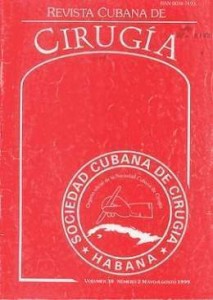
El cáncer de mama en Cuba constituye la mayor tasa de incidencia de esta enfermedad en el sexo femenino y la segunda causa de muerte. Como resultado del tratamiento quirúrgico se realiza la mastectomía. De esta circunstancia se deriva la preocupación de las pacientes por ser sometidas a la cirugía reconstructiva. En este trabajo se presentan 3 casos de mujeres mastectomizadas por cáncer y por enfermedad benigna de comportamiento agresivo, tratados en el servicio de Cirugía Reconstructiva del Instituto Nacional de Oncología y Radiobiología, entre marzo de 2010 y marzo de 2012.
 El cáncer de mama es el cáncer más frecuente en las mujeres en todo el mundo y es la principal causa de muerte por cáncer entre las mujeres. La mastectomía profiláctica o curativa a menudo está seguida por la reconstrucción de la mama, por lo que existen varios enfoques quirúrgicos que utilizan implantes de mama con los que los cirujanos pueden restaurar la apariencia, el tamaño y la forma natural de la mama. El objetivo de este trabajo fue evaluar los efectos de diferentes tipos de implantes de mama sobre la contractura capsular, las complicaciones quirúrgicas a corto y a largo plazo, el nivel de satisfacción posoperatoria y la calidad de vida en las pacientes sometidas al proceder.
El cáncer de mama es el cáncer más frecuente en las mujeres en todo el mundo y es la principal causa de muerte por cáncer entre las mujeres. La mastectomía profiláctica o curativa a menudo está seguida por la reconstrucción de la mama, por lo que existen varios enfoques quirúrgicos que utilizan implantes de mama con los que los cirujanos pueden restaurar la apariencia, el tamaño y la forma natural de la mama. El objetivo de este trabajo fue evaluar los efectos de diferentes tipos de implantes de mama sobre la contractura capsular, las complicaciones quirúrgicas a corto y a largo plazo, el nivel de satisfacción posoperatoria y la calidad de vida en las pacientes sometidas al proceder. Autologous fat grafting (AFG) or lipofilling is nowadays a popular technique for breast reconstruction after breast cancer surgery. There is debate regarding the oncological safety and risks of this procedure in breast cancer patients. A systematic review of the literature published between January first 1995 and October first 2016 was conducted regarding the efficacy, safety and complications of this technique in breast cancer patients after their cancer treatment.
Autologous fat grafting (AFG) or lipofilling is nowadays a popular technique for breast reconstruction after breast cancer surgery. There is debate regarding the oncological safety and risks of this procedure in breast cancer patients. A systematic review of the literature published between January first 1995 and October first 2016 was conducted regarding the efficacy, safety and complications of this technique in breast cancer patients after their cancer treatment.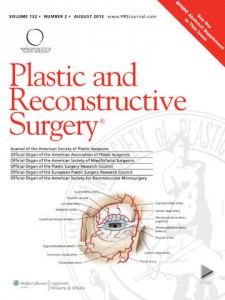 In March of 2013, the Executive Committee of the American Society of Plastic Surgeons approved an evidence-based guideline on breast reconstruction with expanders and implants, as developed by a guideline-specific work group commissioned by the society’s Health Policy Committee. The guideline addresses ten clinical questions: patient education, immediate versus delayed reconstruction, risk factors, radiation therapy, chemotherapy, hormonal therapy, antibiotic prophylaxis, acellular dermal matrix, monitoring for cancer recurrence, and oncologic outcomes associated with implant-based reconstruction.
In March of 2013, the Executive Committee of the American Society of Plastic Surgeons approved an evidence-based guideline on breast reconstruction with expanders and implants, as developed by a guideline-specific work group commissioned by the society’s Health Policy Committee. The guideline addresses ten clinical questions: patient education, immediate versus delayed reconstruction, risk factors, radiation therapy, chemotherapy, hormonal therapy, antibiotic prophylaxis, acellular dermal matrix, monitoring for cancer recurrence, and oncologic outcomes associated with implant-based reconstruction.
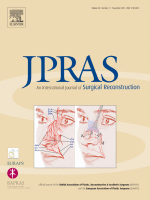 Mastectomy and breast reconstruction are essential parts of the treatment of breast cancer. Acellular dermal matrices (ADMs) have been used for the reconstruction of the lower pole due to many advantages; however, its cost is seen as a major drawback in this era of concern for the allocation of health-care funds. Recently, polyglactin 910 (Vicryl; Ethicon, Somerville, NJ, USA) mesh has been published as an alternative. We assessed the published literature, in particular investigating for studies that compare Vicryl mesh with ADM.
Mastectomy and breast reconstruction are essential parts of the treatment of breast cancer. Acellular dermal matrices (ADMs) have been used for the reconstruction of the lower pole due to many advantages; however, its cost is seen as a major drawback in this era of concern for the allocation of health-care funds. Recently, polyglactin 910 (Vicryl; Ethicon, Somerville, NJ, USA) mesh has been published as an alternative. We assessed the published literature, in particular investigating for studies that compare Vicryl mesh with ADM.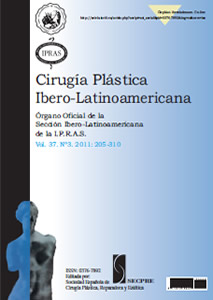 La reconstrucción mamaria inmediata postmastectomía radical modificada o subcutánea devuelve la feminidad a las pacientes al crear una neomama con volumen adecuado, simetría, visión tridimensional, forma anatómica y sensibilidad táctil en el área reconstruida. Para este fin se han descrito múltiples técnicas quirúrgicas. Describimos nuestra técnica quirúrgica mediante la cual, al realizar la mastectomía, creamos un bolsillo retromuscular amplio, sin tensión, conformado por el músculo pectoral mayor que es desinsertado en su base inferior, y un colgajo con pedículo lateral interno del músculo oblicuo externo, los cuales al suturarse entre sí, cubren, protegen y crean un amplio bolsillo para el expansor o prótesis mamaria. Estos colgajos se cubren a su vez por un colgajo cutáneo-adiposo.
La reconstrucción mamaria inmediata postmastectomía radical modificada o subcutánea devuelve la feminidad a las pacientes al crear una neomama con volumen adecuado, simetría, visión tridimensional, forma anatómica y sensibilidad táctil en el área reconstruida. Para este fin se han descrito múltiples técnicas quirúrgicas. Describimos nuestra técnica quirúrgica mediante la cual, al realizar la mastectomía, creamos un bolsillo retromuscular amplio, sin tensión, conformado por el músculo pectoral mayor que es desinsertado en su base inferior, y un colgajo con pedículo lateral interno del músculo oblicuo externo, los cuales al suturarse entre sí, cubren, protegen y crean un amplio bolsillo para el expansor o prótesis mamaria. Estos colgajos se cubren a su vez por un colgajo cutáneo-adiposo.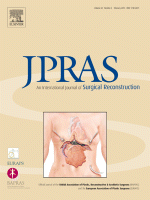 The prestigious magazine Journal of Plastic, Reconstructive & Aesthetic Surgery publish this article about an actual issue at the Services of Plastic Surgery. There is growing interest in the use of autologous fat grafting (AFG) for breast reconstruction. Concerns have been raised regarding its effectiveness and safety. The primary objective was to determine the oncological, clinical, aesthetic and functional, patient reported, process and radiological outcomes of AFG.
The prestigious magazine Journal of Plastic, Reconstructive & Aesthetic Surgery publish this article about an actual issue at the Services of Plastic Surgery. There is growing interest in the use of autologous fat grafting (AFG) for breast reconstruction. Concerns have been raised regarding its effectiveness and safety. The primary objective was to determine the oncological, clinical, aesthetic and functional, patient reported, process and radiological outcomes of AFG.

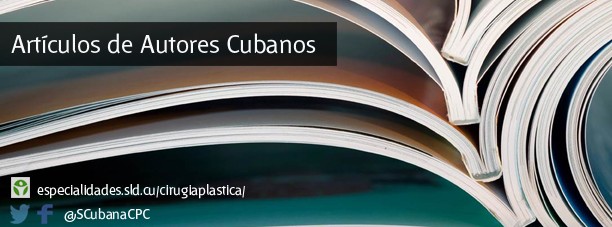
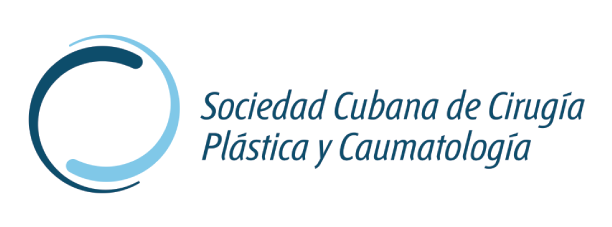

 Sitio web publicado el
Sitio web publicado el
Los lectores comentan